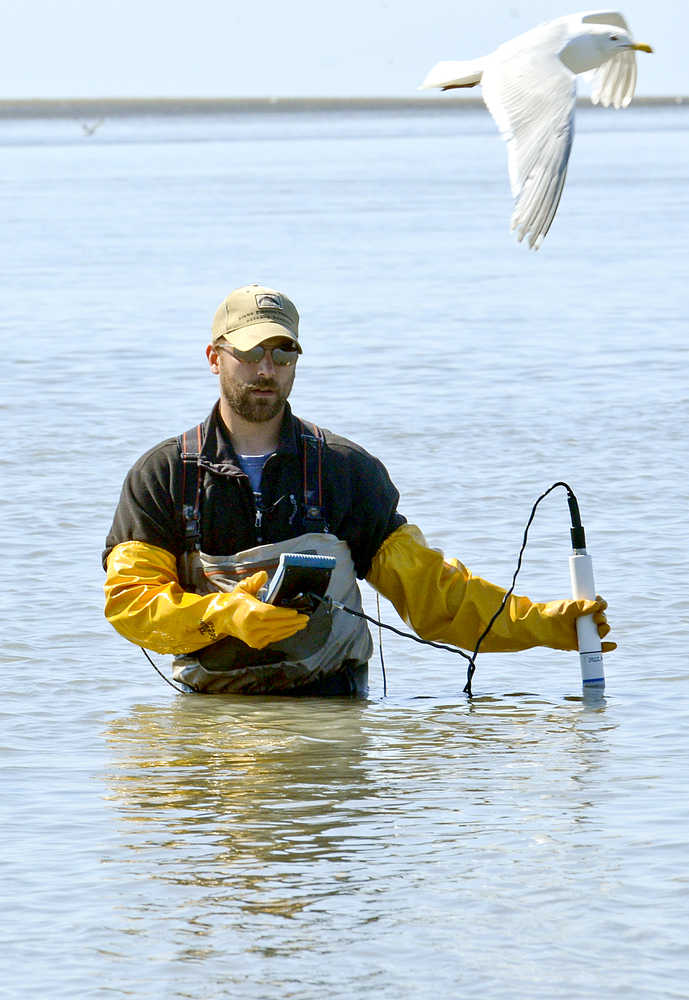The Kenai Watershed Forum has been awarded a $96,000 grant to continue monitoring bacteria in the Kenai River.
The 2014 monitoring program will also include tests on the Kasilof River and advances in microbial source tracking could allow researchers to pinpoint which contributing source causes the most bacteria to end up in the rivers.
On the Kenai River common sources of bacteria include a large rookery — watershed forum researchers estimated between 7,500 and 10,000 birds during a day in June 2013 — an active dipnet fishery where hundreds of people camp and stand in the water near the mouth of the river, dogs and bacteria migrating downstream.
“The last time we looked at it, (researchers) could tell us who was contributing but they couldn’t give us a percentage of contribution and they tell us now they have a better handle on that,” said Alaska Department of Environmental Conservation Environmental Specialist Tim Stevens.
The state’s Department of Environmental Conservation, or DEC, funded the grant. The Kasilof River, which Stevens said does not contain the level of bacterial contamination that has been found in the Kenai River, has been added to the 2014 monitoring program so that researchers can have more data on that river’s water quality.
“We want two years of data on a beach before we stop monitoring it,” Stevens said. “We’re trying to get that second year for the Kasilof.”
Last year in July, elevated levels of fecal coliform and enterococci bacteria in the Kenai River prompted the DEC to warn dipnetters to wash their fish and avoid getting river water into their mouths. At the time, Steven said fecal coliform and eterococci bacteria were not dangerous, but are harbingers of harmful pathogens.
While the robust dipnet fishery, with all of its waste, can contribute to the elevated levels of bacteria, the river’s water quality standards for bacteria were exceeded in June 2013 — well before the fishery opened.
This year, researchers will change the monitoring program slightly by sampling twice a day to see if bacterial problems are consistent throughout the day. In addition, samples will also be collected around the bird rookery to see if it is a strong source of bacteria in the water.
Monitoring will take place at the Warren Ames Bridge and four locations on the north and south beaches at the mouth of the Kenai River. On the Kasilof River, four locations at the mouth of the river and one undetermined location farther upstream will be tested.
A report on the 2013 bacterial monitoring at the mouth of the Kenai has yet to be issued. Stevens said the City of Kenai was issued the grant last year. A report is due from that testing on June 30.

